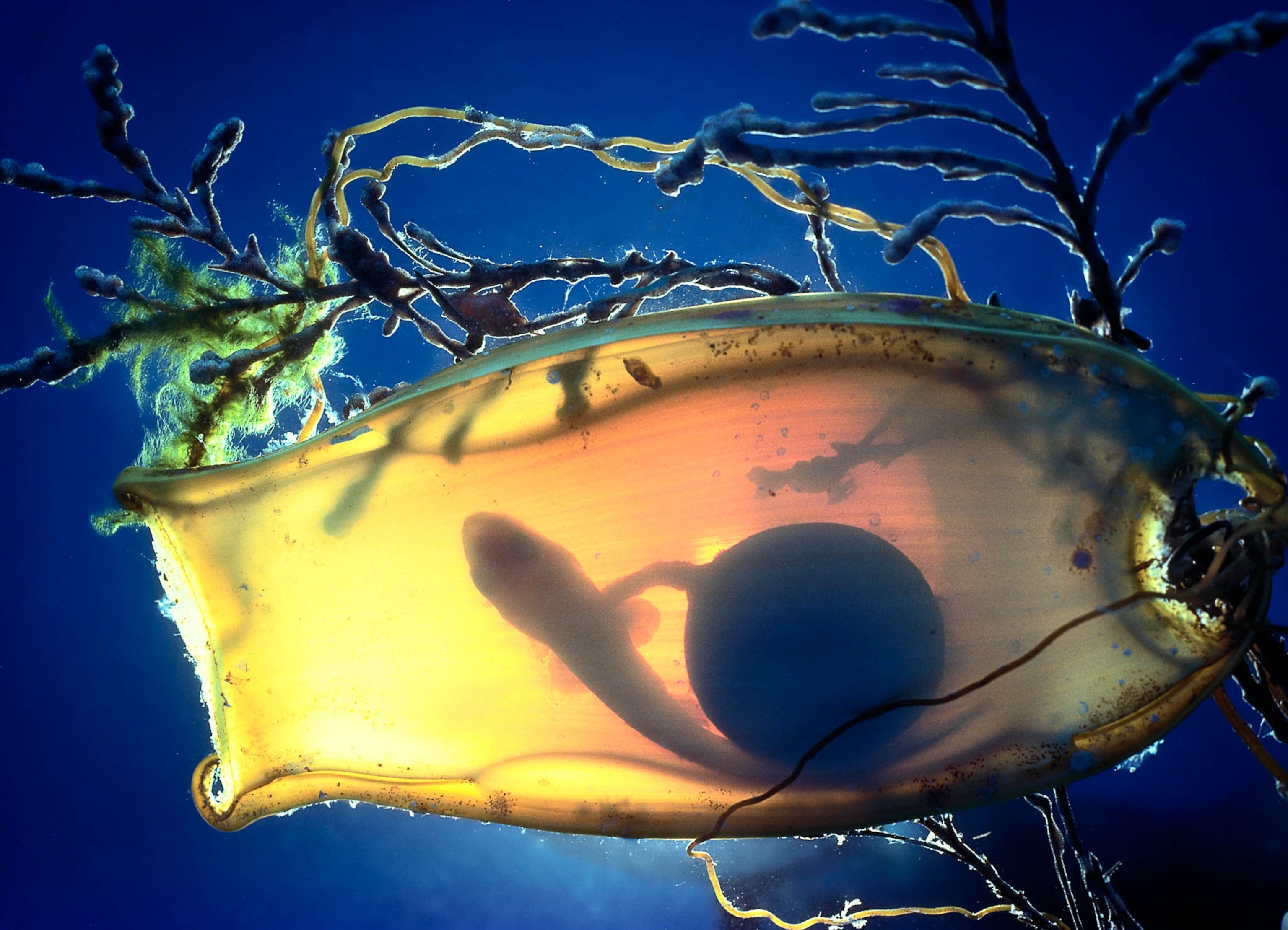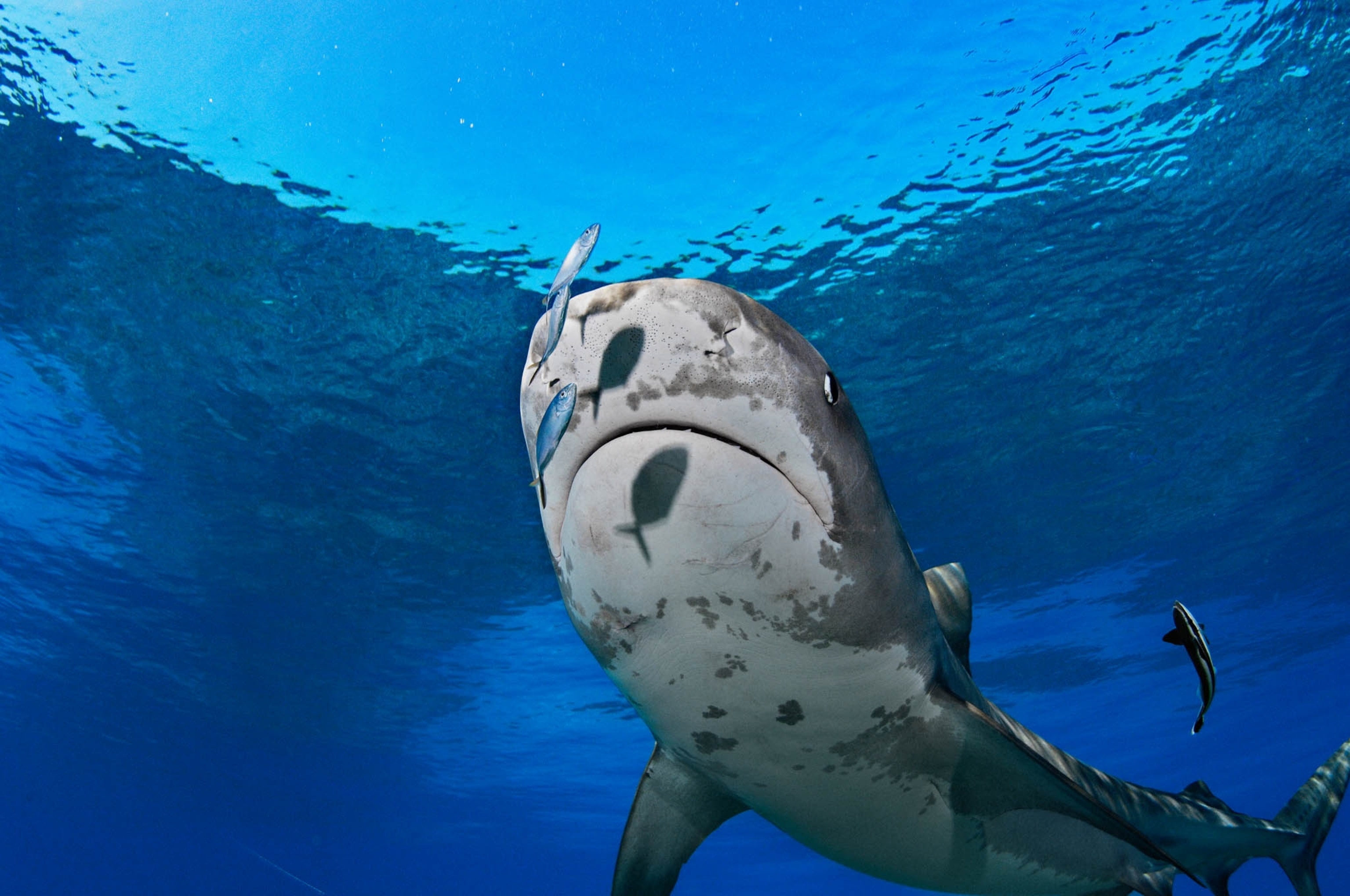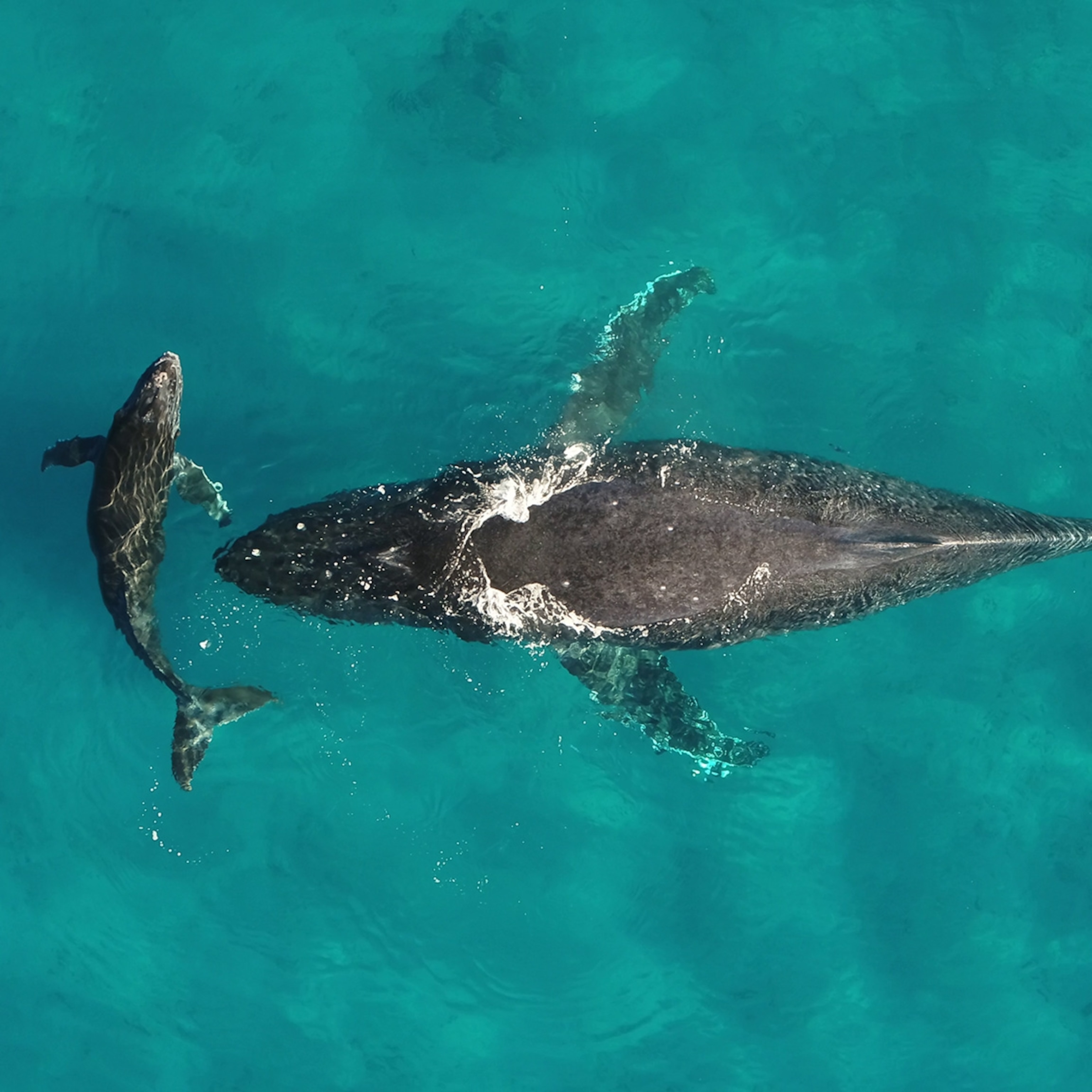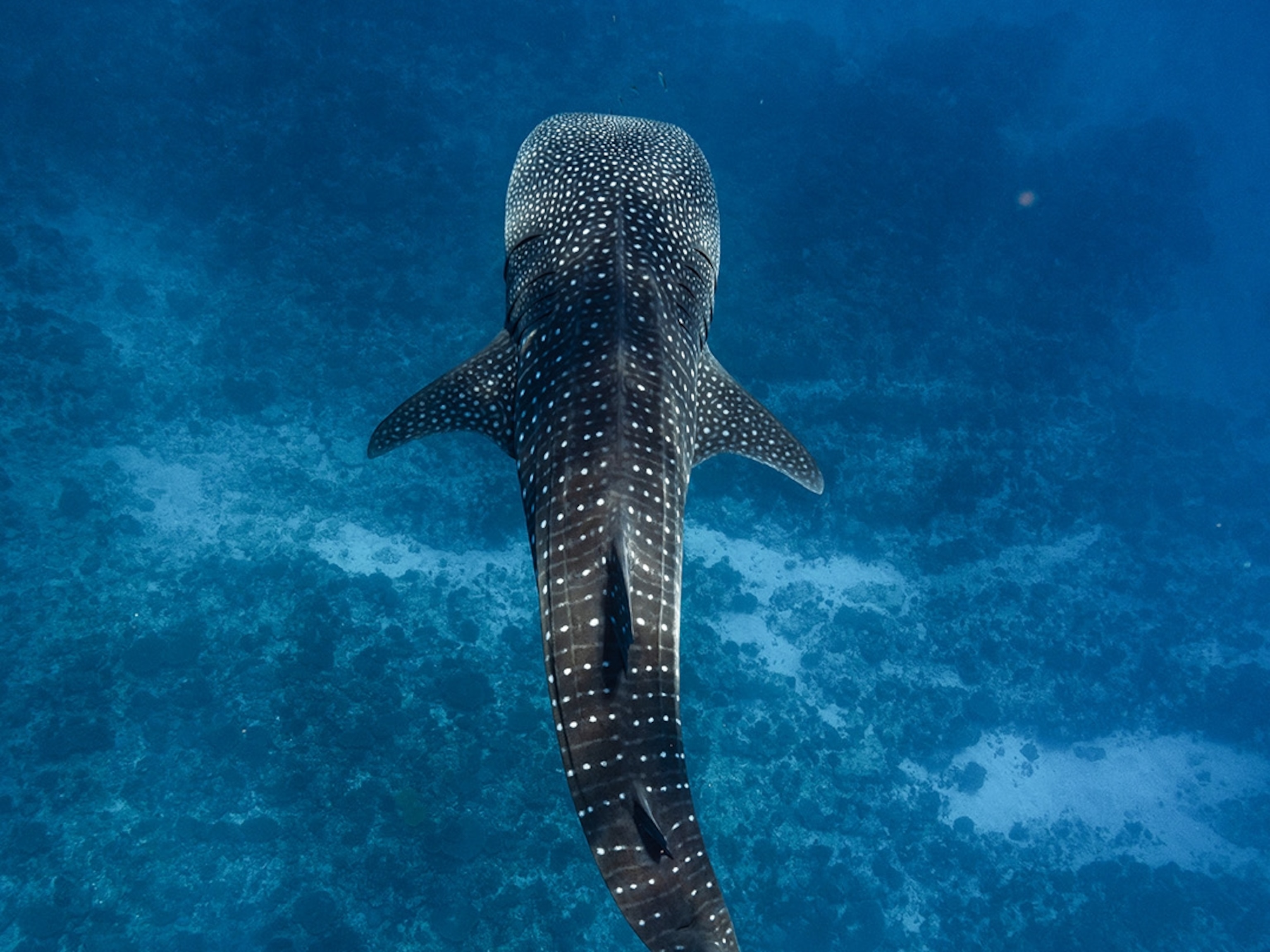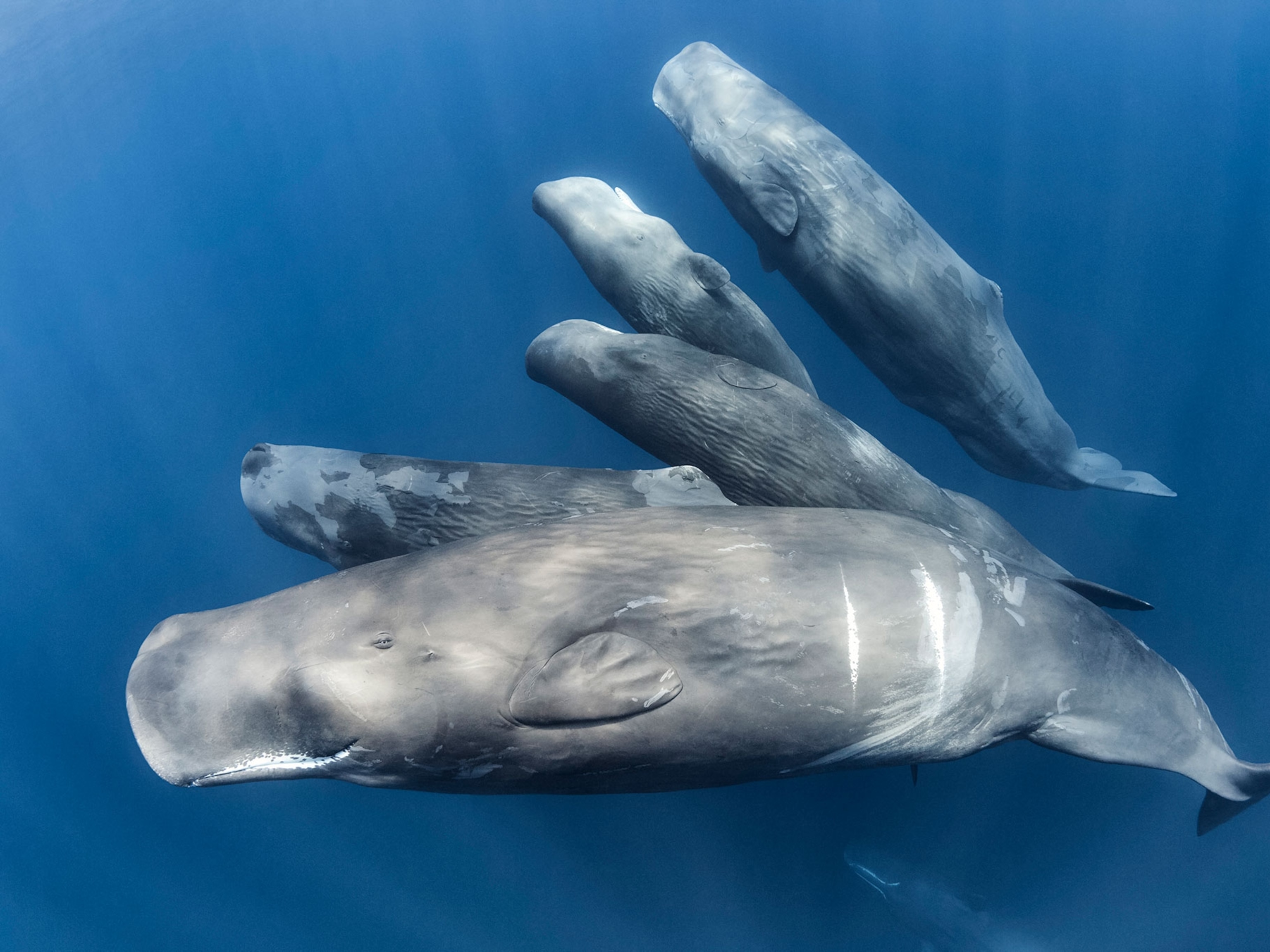How Do You Stick a Camera on a Manta Ray? Peanut Butter
Confronted with suction cup cameras that wouldn’t stay stuck, scientists are using an innovative solution to gather data that could help protect these gentle giants.
The scientists of National Geographic’s Crittercam team are no strangers to innovation—they’ve spent the last thirty years designing and refining ride-along cameras that record intimate data about the daily lives of over 70 species on land and at sea.
The latest trick in their tool belt? Peanut butter.
“No doubt Greg and I will be arguing for years about whose idea the peanut butter was, so naturally you should put it in writing that it was my idea,” jokes Joshua Stewart by email.
Stewart, a marine biologist and National Geographic explorer, teamed up in 2016 with Crittercam pioneers Greg Marshall and Kyler Abernathy to study manta rays. Diving in the manta-rich waters off of Mexico’s Pacific coast, the scientists used suction cups to harmlessly attach cameras to the manta rays’ backs, recording video and audio but also collecting data on the animals’ speed and location, as well as water depth and temperature. (Read “Manta Rays Get Crittercams for First Time Ever”)
But on a recent dive in Bahía de Banderas, Mexico, they noticed a problem. The suction cups, designed for the smoother skin of marine mammals like whales and seals, couldn’t get a good grip on mantas’ sandpaper-y hides. Like all sharks and rays, mantas’ skin is covered in tiny tooth-like bumps, called denticles, which reduce drag and make for faster swimming—and make it harder for a suction cup to fully seal.
Giving the suction cup a solid push could sometimes help a camera stay attached for as many as three hours before it slipped off and floated to the surface, where its radio signal could be picked up by the Crittercam team. But in other attempts, cameras popped off in under a minute.
A Sticky Situation
The team reasoned that some cameras stuck longer because the manta’s skin had more mucus, which filled in the gaps between denticles and made for a stronger seal. But how to replicate the effect consistently?
“We happened to have peanut butter on hand, and decided 'what the hell, let's give it a go!'“ says Stewart.
When the first deployment of a buttered-up suction cup kept the camera in action for six hours—double the previous record—the team knew they were on to something.
They had to act fast: Yelapa, the small coastal town serving as research home base, only stocked a few jars of peanut butter to sell to American tourists. “We cleaned them out to be sure we would have enough for the coming weeks,” Stewart says. “Luckily there was some left over for sandwiches.” (Watch “These Giant Manta Rays Just Want to Hang Out”)
So far, the team has made about 30 successful deploys of peanut buttered-Crittercams, raking in double the data on manta ray behavior.
And though the team looked for a better alternative to their on-the-fly solution, in the end they chose to stick with it. It turns out peanut butter is a more efficient sealant than silicone grease or denture cream, not to mention tastier.
Up Close and Personal
Being able to deploy Crittercams for twice as long, and in more challenging dives, could help Stewart and the team plumb the hidden depths of manta ray ecology.
Although popular with tourists for their friendly manner and awesome size—mantas can weigh as much as a mid-size sedan, their wings stretching over twice the car’s length—manta rays still have plenty of secrets.
Most observations of manta rays, and of mobulas, their smaller, flying cousins, occur at reef cleaning stations as small fish scrub their skin of bacteria. Mantas’ habitat use, especially foraging behavior, remains murkier in open water.
Scientists can associate mantas’ presence in an area with high zooplankton productivity, but they rarely observe the animals feeding. Now the Crittercams are providing evidence that mantas forage at greater depths, where warm surface water abruptly cools.
Stewart theorizes that mantas are flexible feeders, able to exploit different resources within a restricted area rather than migrating as other large marine vertebrates do. (Read “Manta Rays Prefer Staycations Over Long Migrations”)
But for Stewart, who is deeply involved in the conservation initiatives Manta Trust and Gulf of California Marine Program, the science is only half the story.
“The unfortunate story is that in many places, mantas and mobulas are doing very poorly,” Stewart says.
A slow reproductive rate and a lack of natural predators make them especially susceptible to—and slow to recover from—human exploitation.
Though mantas are not a heavily targeted fishery, they’re easily snared as accidental bycatch. And those pressures may increase with a recent demand for manta gill plates, which are used as an ingredient in neo-traditional Chinese medicine despite their absence in ancient texts. (Read “Transforming Indonesia's Manta Fisheries”)
Yet there is evidence that protected manta populations can stabilize and recover. And the gentle giants’ charisma doesn’t hurt: one study estimates the manta ecotourism trade brings in about $140 million a year around the world, whereas targeted manta fisheries scrape together less than 3% of that sum.
A deeper understanding of mantas’ movements would allow scientists to better predict where they’ll be, in turn enabling more efficient protections for the species.
Which is good news for mantas, and for the scientists who study them. “Their personalities are incredible, and their inquisitiveness, playfulness, and pure curiosity sets them apart from all other fishes in my book,” Stewart says.


